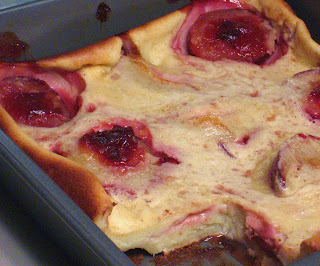Years later, I still enjoy this treat, and I often look for it when I am in Asian markets. Although these are sometimes sold as "Soy Eggs", I find that the tea part is really key to flavoring the eggs. After several not-quite-so-satisfying samples, I decided that it was time for me to make my own.
The recipe is actually very easy, and I'm kicking myself for not making these earlier. I could have been enjoying this treat on my own years ago! Honestly the only extra ingredient that I needed to buy was star anise. Being Asian, I always have soy sauce and black tea on hand, and as someone who cooks, I also always have eggs. And who doesn't keep sugar in their house? Aliens, that's who. So now that we've sorted out our ingredients, let's talk technique.
I started this recipe the same way I make my soft boiled eggs. Most recipes for tea eggs call for hard boiling the eggs first, but I think that when you hard boil the eggs before you add the flavoring, it's like searing a steak before you salt it. However, you do need to cook the eggs so that you can crack the shell without raw egg going everywhere, so I compromised and soft boiled my eggs before cracking them. Feel free to hard boil yours though if it makes your life easier!
After I soft boiled my eggs, I crack them gently all around, and then cooked them again in the soy sauce and tea mixture. Then I strained out the tea and let the eggs sit for several hours (the longer, the better). You can see that the eggs in the picture at the top soaked for about 8 hours. The eggs in the picture below soaked for closer to 24 hours.
Now I'm sure that at this point, you're probably asking me one of two questions:
- Why don't I just do the entire cooking process in the tea mixture? Because grocery store eggs are covered in a thin layer of wax and who-knows-what-else (e.g. bacteria), so I wanted to get rid of that before cooking up a tea mixture that I would later be eating / drinking.
- Why don't I just completely peel the eggs and soak them in the tea mixture that way? Actually, you can absolutely do this. The only thing is, you won't get a pretty cracked / marbled appearance to your egg, and as we all know, appearance matter. However, after I snapped these pictures, I actually did peel the eggs completely and let them soak overnight. They absorbed the flavors beautifully, so if you don't care about aesthetics, this is definitely the way to make delicious tea eggs.
Delicious Tea Eggs Recipe
10 eggs (that's just what fit in my pot)
3 bags of black tea (or 3 tablespoons of loose black tea)
1/4 cup soy sauce (I used Kikkoman)
4-5 pieces of star anise (or 2 whole pieces)
Water
1 teaspoon of sugar (I use raw / turbinado sugar)
To soft boil your eggs: Place them in a pot with just enough tap water to cover them. Cover the pot with a lid. Turn on high heat and allow the water to come to a boil. For me, with a gas stove, this took 7-8 minutes. As soon as the mixture is at a rolling boil (meaning the most bubbly it's going to get... aka the point when you would normally throw in your pasta), turn off the heat. Leave the pot alone for 2 minutes. Do not take it off the stove. Do not touch the lid. Set a timer and don't touch the pot.
After two minutes, drain the eggs and cover with cold tap water.
Crack the eggs gently using a spoon or your kitchen counter (whatever is convenient). Remember to be gentle! These are soft boiled eggs.
 To make the tea eggs: Place the soft boiled eggs back into the pot in a single layer. Add just enough fresh tap water to barely cover the eggs. Add the tea, soy sauce, star anise, and sugar. Bring the pot to a boil over medium-high heat (should take about 10-12 minutes).
To make the tea eggs: Place the soft boiled eggs back into the pot in a single layer. Add just enough fresh tap water to barely cover the eggs. Add the tea, soy sauce, star anise, and sugar. Bring the pot to a boil over medium-high heat (should take about 10-12 minutes).Once it has started boiling, turn down to low heat. Remove the tea bags (or strain out the loose tea) and allow the eggs to simmer for roughly 30 minutes.
Turn off the heat.
Tap all the eggs again all over to make sure that they are really cracked. Allow to soaked for at least 3 hours in the tea/soy mixture.
Note: You should store these cooked eggs in the refrigerator, in the tea mixture. They will keep for at least 5 days. I eat these eggs cold, straight from the fridge. You can remove the eggs about 30 minutes before serving if you prefer them room temperature.
An extra tea liquid will keep in the fridge for about 2 weeks. It can be reused to make more batches of tea eggs.

























.JPG)

